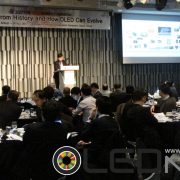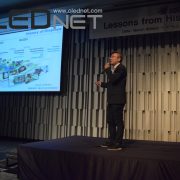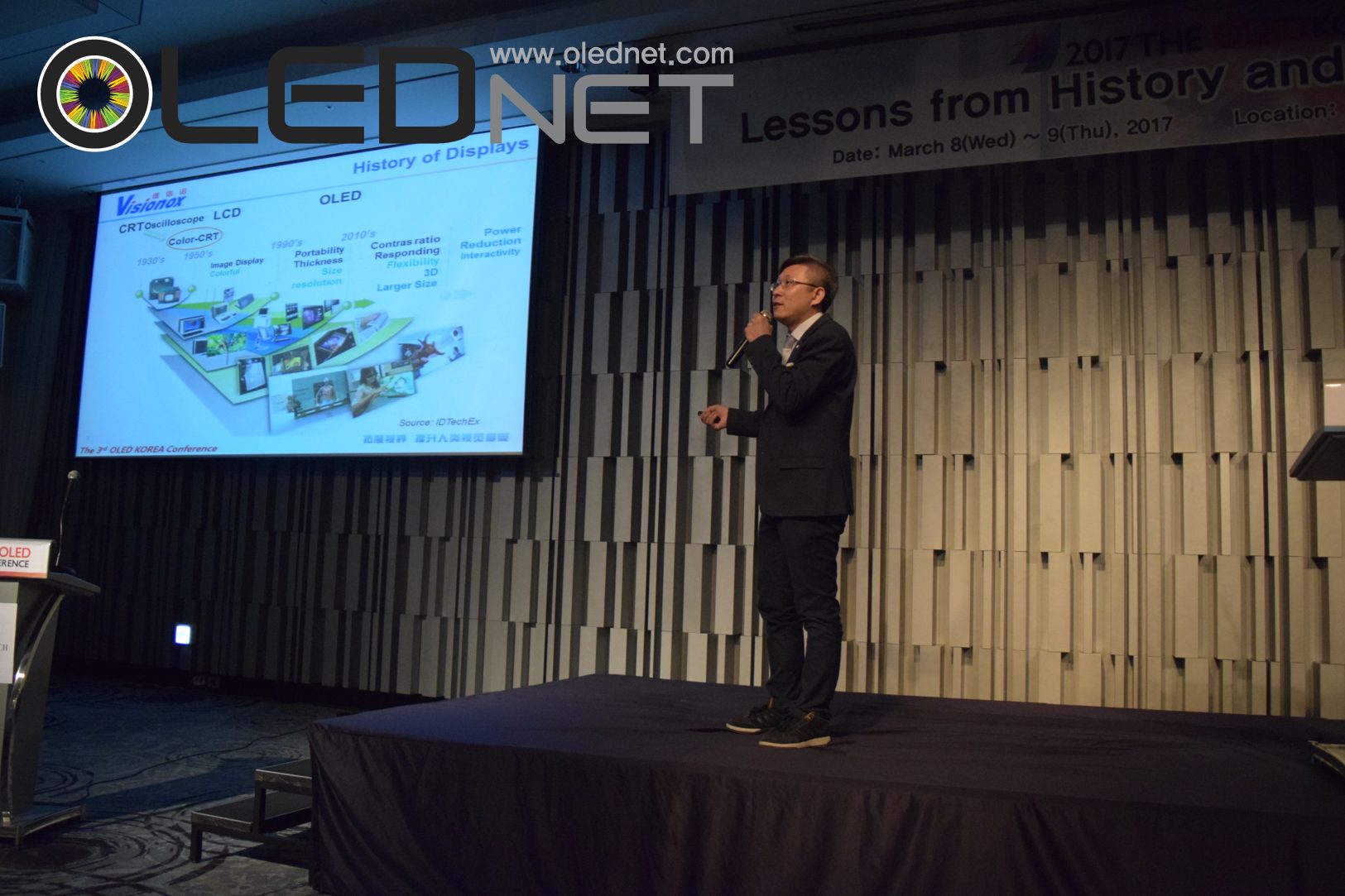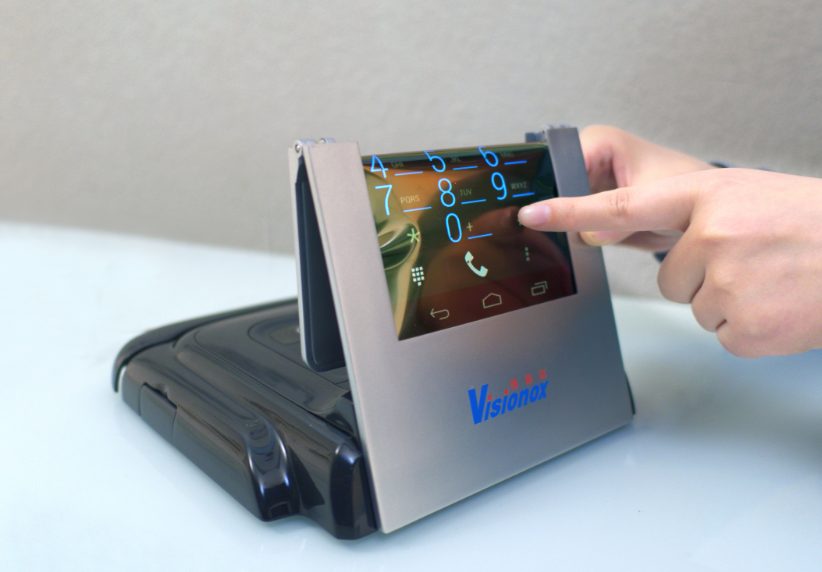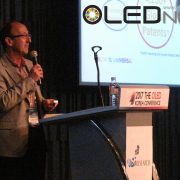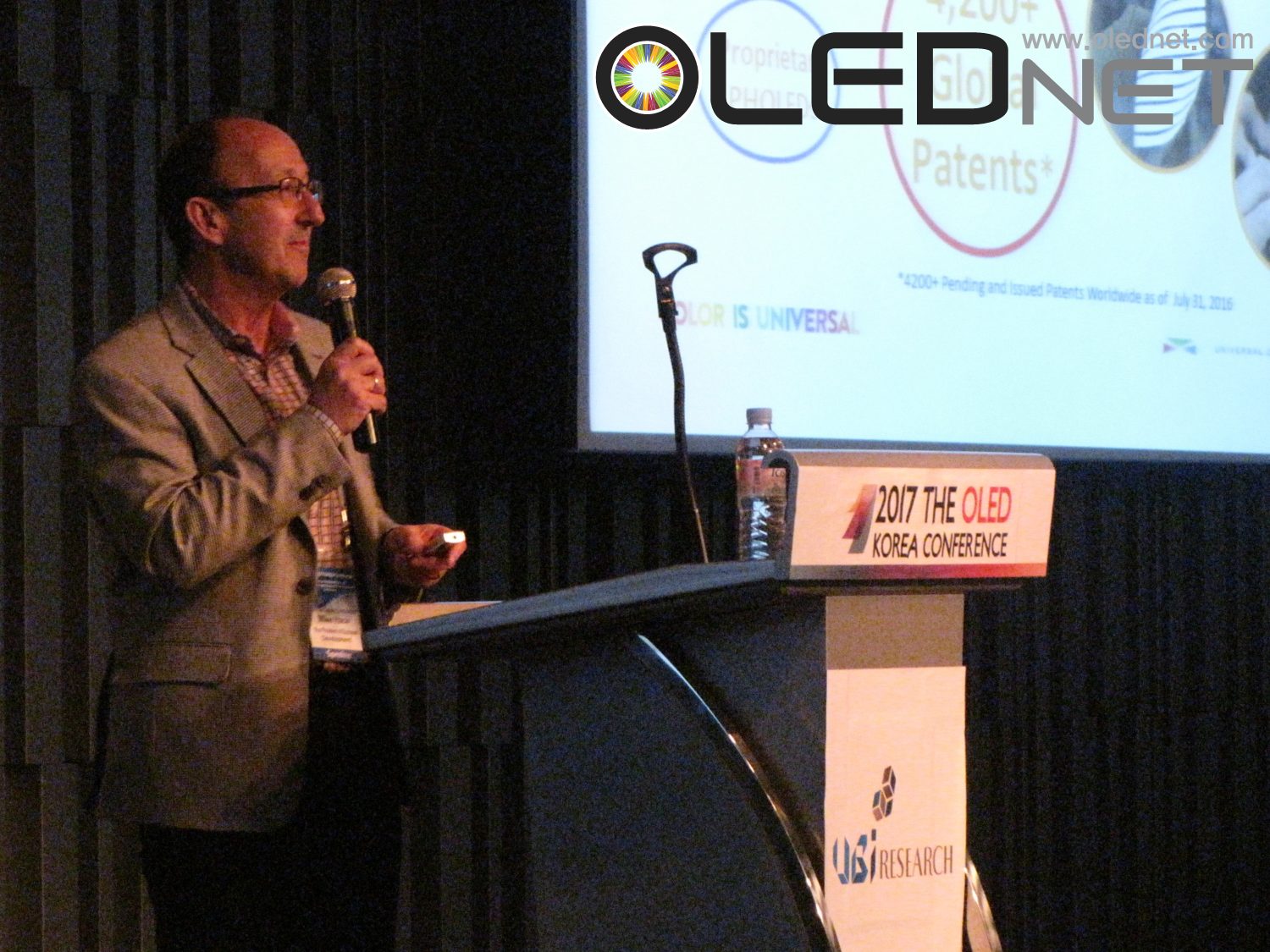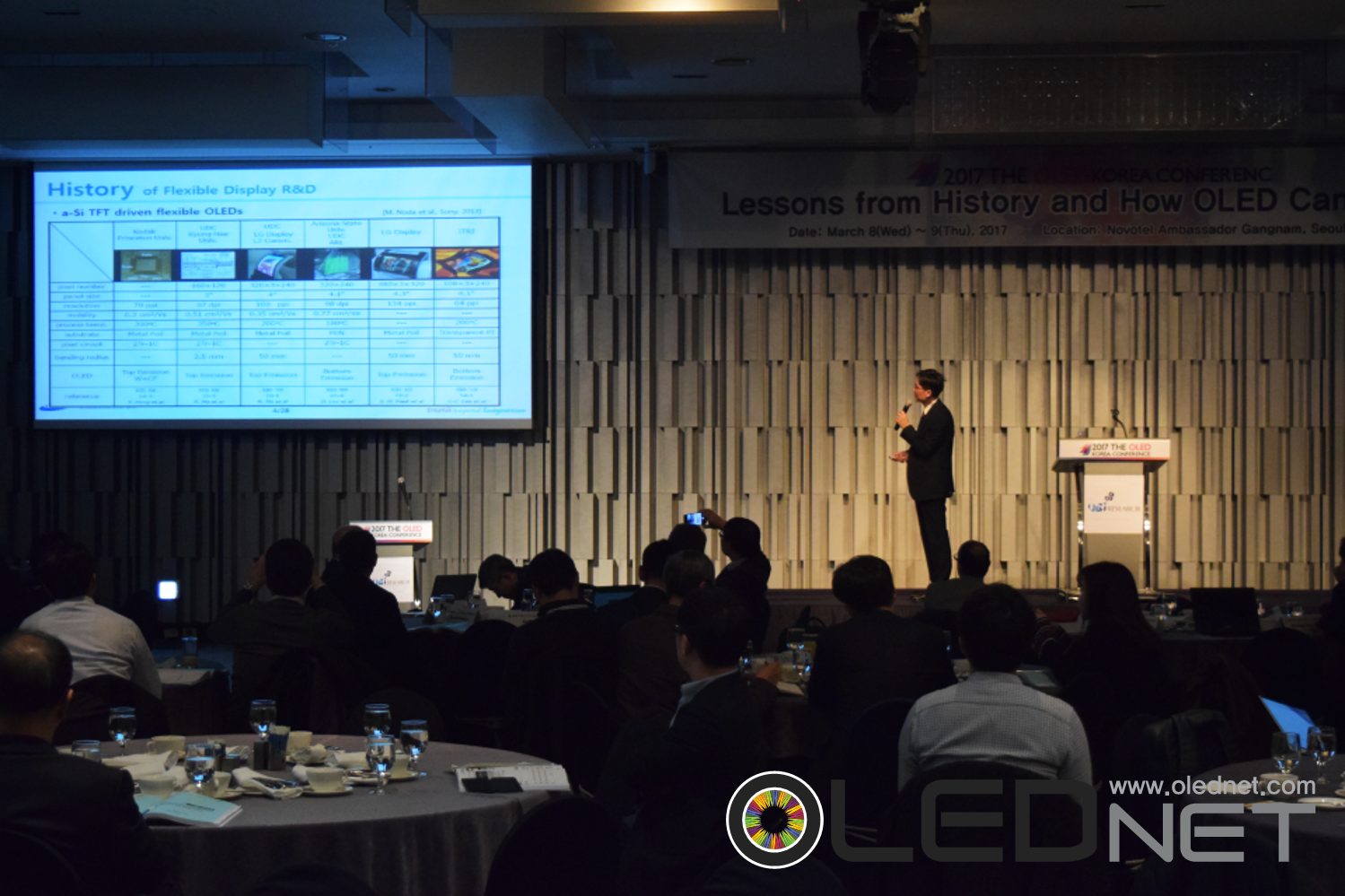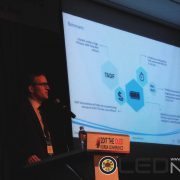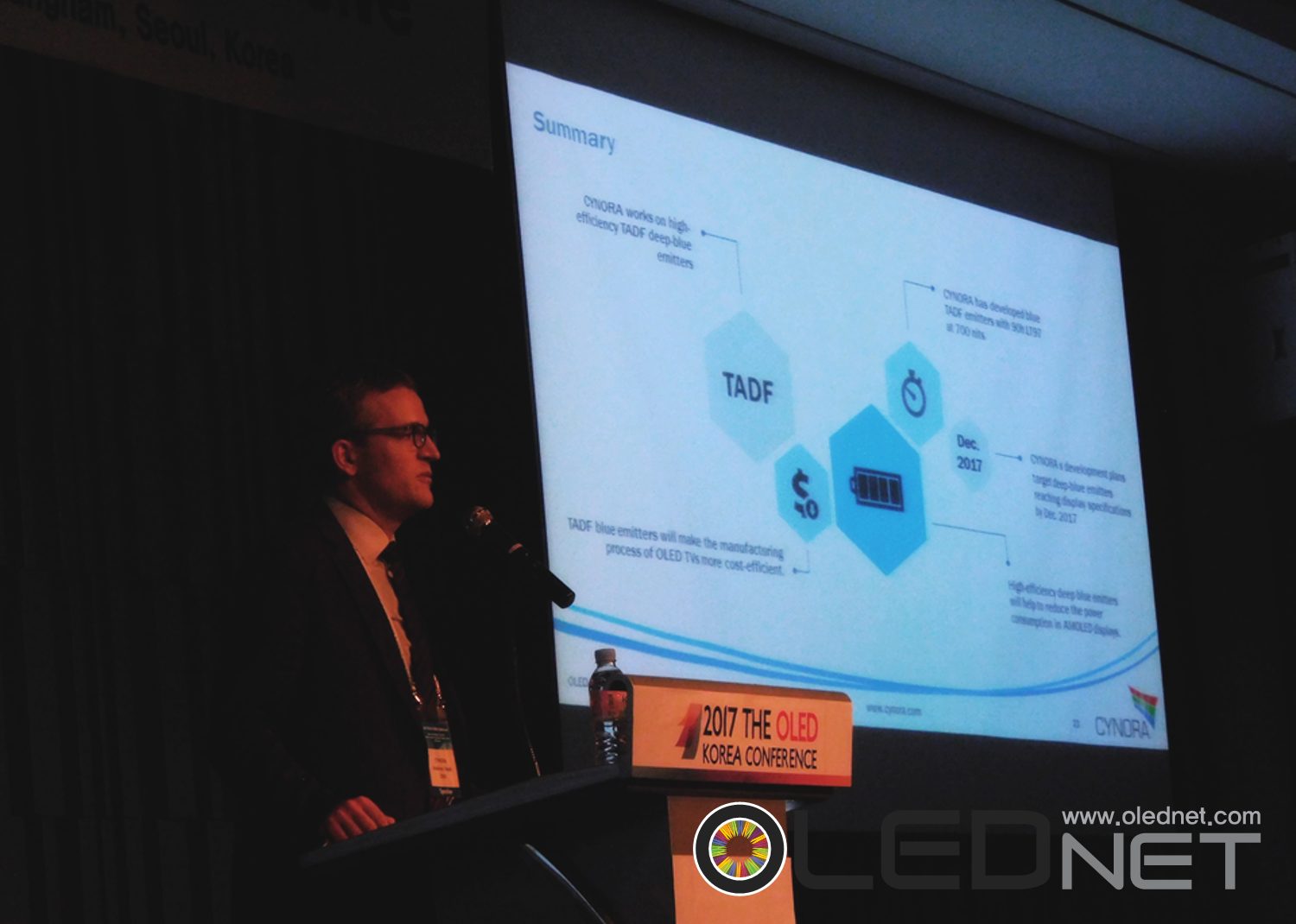What is the future of OLED?
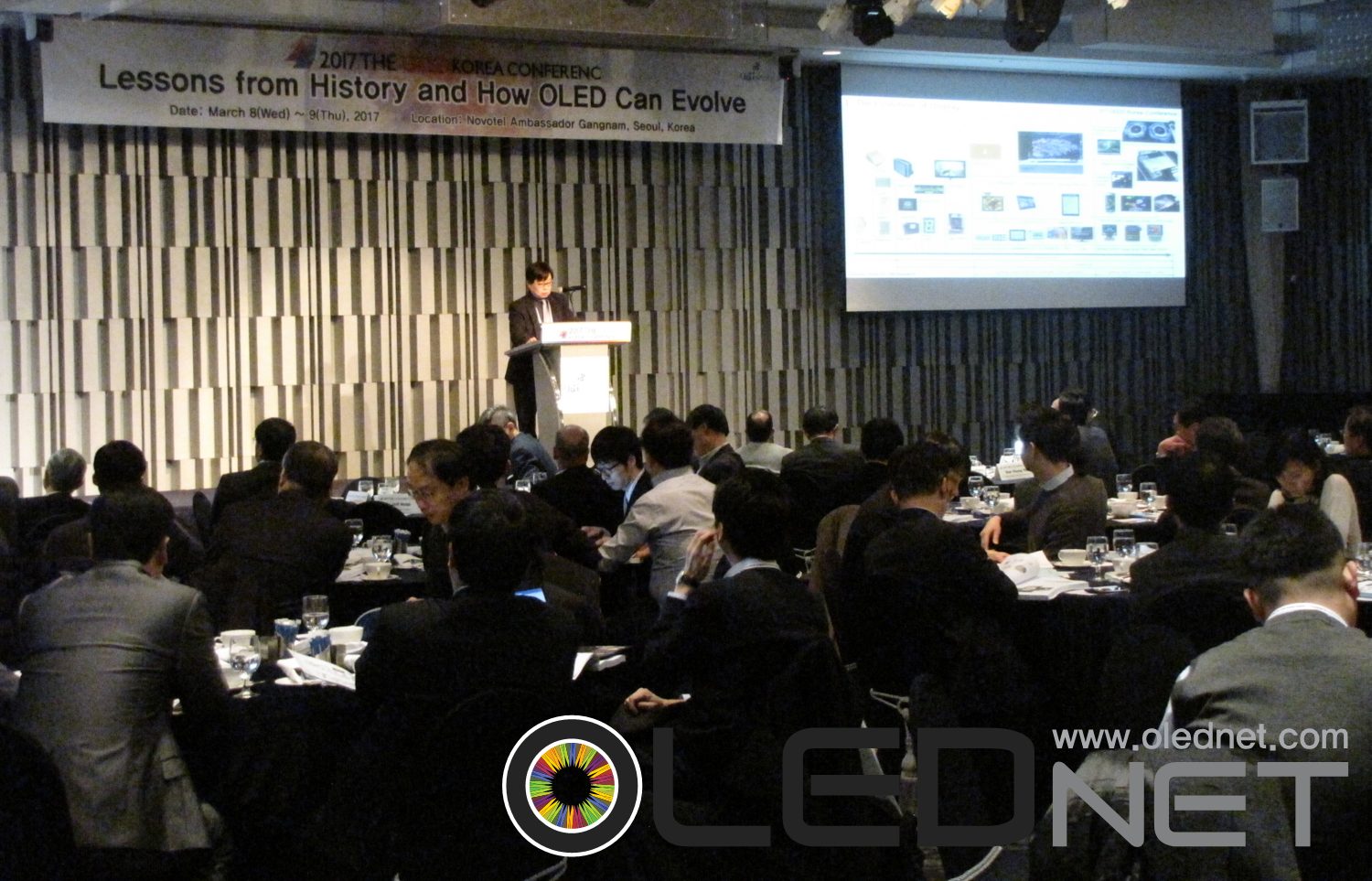
Choong Hoon Yi, president of UBI Research made a keynote speech with a theme “The Future of OLED” at ‘The 3rd OLED Korea Conference’ hosted by UBI Research for two days from March 8 to 9.
Choong Hoon Yi, president of UBI Research stated “100-inch rollable wall TV is the future of OLED”. “human eyes have a wide viewing angle so even if display covers the whole wall, there is no discomfort. Glass substrate OLED may be difficult to carry, and accordingly rollable display can be rolled up and delivered like a carpet.” he added.
He also predicted “plastic substrates and printing process for price cut will be suitable for rollable display. TFT and pixel production techniques made by Solution process will be a key to future technology”. If a speaker is built in rollable display, and a correspondence between the person and sound on the screen will represent a perfect display.
Choong Hoon Yi said the reasons for the success of OLED can be found out in the mobile market.
Firstly, 4K contents to be used for future TVs will be used in smartphones, and smartphones will also use 4K resolution.
Second, Apple will release the OLED iPhone this year, and there will be an Apple effect because Samsung Display is building the A3 line for Apple to produce 200 million 5.5-inch OLED displays.
Third, Chinese market accounts for 40% of the global smartphone market, and Chinese set companies have been rapidly increasing the release of smartphones.
Lastly, a flexible OLED to cover the full screen smartphone will have no home button and feature wide screen to satisfy visual functions, and its strengthened security system that reads fingerprint and pattern can be applied.
For the four reasons above, he expected OLED will be key in the future mobile market.
Meanwhile, he expected the shipments of OLED panel will be 1.7 billion in 2021, and the sales will amount to US$ 75 billion. Korean display companies will represent more than 80% of the total market in 2021, and China will take up 10~15%. In addition, he forecast that display panel companies will make a new investment in flexible OLED which will account for 70% of the total OLED market.

